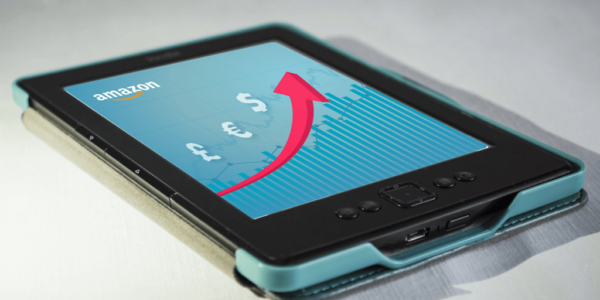Leverage Q1 ecommerce dates into sales [FREE PLANNER]
There’s no better time to lay the groundwork for 2024 than its first quarter. It will set the stage for your entire ecommerce year.
Q1 is packed with relevant ecommerce opportunities and hot trends that you can easily utilize if you apply a strategic framework to your business operations.
This article will help you:
- Recognize key Q1 ecommerce dates and opportunities.
- Increase productivity in your strategic domestic and international planning.
- Access extra actionable sales tips to consistently grow sales on online marketplaces through our FREE downloadable planner.
[Download your free copy of the Q1 Ecommerce Planner]
How to seize all Q1 ecommerce opportunities
The start of a new year brings a fresh wave of optimism and entrepreneurial spirit.
But when it’s time to dust off your strategies, recalibrate your approach, and harness the power of data-driven insights, many online sellers feel overwhelmed. To add to it, the post-holiday season often brings an influx of returns, posing additional logistical and financial challenges.
Our Q1 Ecommerce Planner was created to help brands navigate the dynamic online marketplace landscape.
The first quarter of 2024 offers a wealth of opportunities to tap into seasonal trends, connect with target audience, and ultimately drive sales and expand globally.
However, it’s not just about adding a couple of keywords here and there or running a generic marketing campaign. If you want to better reach potential customers you should pay extra attention to:
- The cultural significance of each local and international event.
- General consumer behavior, mood, and trends.
- Relevant sales statistics from previous years.
Let’s take the 2024 New Year resolutions as an example.
In previous years, people overwhelmingly listed extra exercise, healthier eating habits and weight loss as top resolution priorities. According to Statista, planning to save more money is the top 2024 resolution. This information should be taken into account by online sellers and inform their sales strategy for next January.
Overview of key Q1 dates
Here are some other examples of important January, February, and March dates in 2024, their specific context, and useful insights:
January 15: Blue Monday – a reason for retail therapy
Blue Monday, the third Monday of January, is considered the most depressing day of the year. It’s also often associated with post-holiday blues that is remedied with online shopping.
Sellers can counter this sentiment by offering discounts to encourage retail therapy and boost sales.
February 10: Lunar New Year – a mark of renewal and tradition
The Lunar New Year also called the Chinese New Year, the most important holiday in many Asian cultures, is a time of renewal, family gatherings, and feasting.
A study by Milieu Insight discovered the most common products and services that consumers purchase for the occasion include fresh fruits and vegetables, sweet snacks & confectioneries, hair cut/styling products, and facial treatments.
54% of respondents in the same survey declared that their overall spending for Chinese New Year this year is likely to be higher than the last.
February 14: Valentine’s Day – the power of romance and love
Love is in the air, and so are sales opportunities. The romantic fervor of Valentine’s Day is a golden opportunity for sellers of apparel, jewelry, flowers, and other gifts.
According to NRF, an average US consumer spends around $192.80 on Valentine’s Day gifts, which creates a significant revenue opportunity. The amount of Valentine’s shopping done via the Internet is predicted to grow in 2023: 40% of V-Day shoppers plan to purchase gifts online. Top gifts? According to the survey: candy (57%), greeting cards (40%), flowers (39%), an evening out (32%), jewelry (22%), clothing (21%), and gift cards (19%). Jewelry, flowers, and clothing are expected to reach new spending records.
March 8: Women’s Day – celebrating extraordinary female figures
International Women’s Day is a global movement recognizing the achievements of women, and a chance to showcase products that inspire them.
From clothing and accessories to books and self-care items, aligning your brand with this empowering message can resonate with a vast audience.
March 17: St. Patrick’s Day – a taste of of Irish delight
On March 17, the world comes together to celebrate all things Irish: leprechauns, shamrocks, and green galore.
Sellers of apparel, beverages, and home décor can tap into this festive spirit by offering green-colored, themed products and promotions.
March 24-25: Holi – the vibrant festival of colors
Holi, a vibrant Hindu festival, is a colorful spectacle of joy and unity.
According to Shiprocket, the 5 top-selling products during Holi include: natural herbal colorings, stain-repellent clothing, skincare and haircare products, waterproof gadgets and accessories, gift baskets.
March 31: Easter Sunday – a time of rebirth
Easter, a time of rebirth and hope, holds immense significance for many cultures. It is a time for family gatherings and gift-giving.
According to NRF, one third of household Easter budgets are going to food. What’s more, 54% of those not celebrating Easter still plan to purchase Easter items, mostly chocolate and candy.
Conclusion
By embracing useful data insights and understanding the cultural nuances of important Q1 events, online sellers can unlock extra revenue in the first quarter of 2024.
Such a culturally-nuanced but data-driven sales strategy will allow brands to stay ahead of competition and navigate the challenges of online sales with confidence and ease.

Be sure to download Webinterpret’s Q1 Ecommerce Planner to capitalize on current seasonal ecommerce opportunities, and discover actionable communication and sales tips to consistently grow sales.
About Webinterpret
Webinterpret supports merchants selling on international ecommerce platforms, such as eBay and Amazon. Our AI-based solution enables selling more effectively with automated listing localization, marketing, and logistics (shipping and returns). By giving your international customers a full end-to-end local shopping experience, Webinterpret improves your conversion and helps establish your business on a global scale.
Our marketplace offer is constantly expanding – if you want to grow your online sales, feel free to contact our sales experts. They will help you analyze your international sales potential and choose markets that will offer you the best possible return on investment.

Plan a winning ecommerce sales strategy for Q1
Sources
Related Posts:
Ecommerce Newsletter
By clicking the “Subscribe now” button, you agree to receive our monthly e-mail newsletter and regular marketing and commercial communications by email from Webinterpret regarding marketing trends and our digital marketing services. You confirm that you have read and agreed to Webinterpret’s Terms of Service and Privacy Policy.




